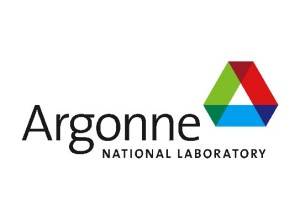 The ASCR Leadership Computing Challenge has awarded 20 projects for a total of 1.5 billion core-hours at Argonne to pursue challenging, high-risk, high-payoff simulations.
The ASCR Leadership Computing Challenge has awarded 20 projects for a total of 1.5 billion core-hours at Argonne to pursue challenging, high-risk, high-payoff simulations.
The Advanced Scientific Computing Program (ASCR), which manages some of the world’s most powerful supercomputing facilities, selects projects every year in areas directly related to the DOE mission for broadening the community of researchers capable of using leadership computing resources, and serving national interests for the advancement of scientific discovery, technological innovation, and economic competitiveness.
The ALCC program allocates up to 20 percent of the computational resources at ASCR’s supercomputing facilities to research scientists in industry, academia, and national laboratories. In addition to ALCF, ASCR’s supercomputing facilities include Oak Ridge Leadership Computing Facility (OLCF) at Oak Ridge National Laboratory and the National Energy Research Scientific Computing Center (NERSC) at Lawrence Berkeley National Laboratory. The ALCF, OLCF, and NERSC are DOE Office of Science User Facilities.
The 20 projects include:
- Ruth Van De Water from Fermi National Accelerator Laboratory received 247 million core-hours for “Semileptonic B- and D-Meson Form Factors with High-Precision.”
- Robert Voigt from Leidos, Inc. received 100 million core-hours for “Demonstration of the Scalability of Programming Environments by Simulating Multi-Scale Applications.”
- Peter Nugent from Lawrence Berkeley National Laboratory received 20 million core-hours for “HPC4 Energy Innovation ALCC End-Station.”
- Brian Wirth from Oak Ridge National Laboratory and the University of Tennessee received 80 million core-hours for “Modeling Fusion Plasma Facing Components.”
- Thomas Blum from the University of Connecticut received 162 million core-hours for “Hadronic Light-by-Light Scattering and Vacuum Polarization Contributions to the Muon Anomalous Magnetic Moment from Lattice QCD with Chiral Fermions.”
- Eric Lancon from Brookhaven National Laboratory received 80 million core-hours for “Scaling LHC Proton-Proton Collision Simulations in the ATLAS Detector.”
- T.P. Straatsma from Oak Ridge National Laboratory received 30 million core-hours for “Portable Application Development for Next-Generation Supercomputer Architectures Consortium/End-Station.”
- Elia Merzari from Argonne National Laboratory received 140 million core-hours for “High-Fidelity Simulation for Molten Salt Reactors: Enabling Innovation through Petascale Computing.”
- Igor Bolotnov from North Carolina State University received 130 million core-hours for “Multiphase Flow Simulations of Nuclear Reactor Flows.”
- Mark Petersen from Los Alamos National Laboratory received 35 million core-hours for “Investigating the Impact of Improved Southern Ocean Processes in Antarctic-Focused Global Climate Simulations.”
- Giulia Galli from the University of Chicago and Argonne National Laboratory received 100 million core-hours for “Large-Scale Simulations of Heterogeneous Materials for Energy Conversion Applications Consortium/End-Station.”
- Phay Ho from Argonne National Laboratory received 90 million core-hours for “Imaging and Controlling Elemental Contrast of Nanocluster in Intense X-Ray Pulses.”
- Aleksandr Obabko from Argonne National Laboratory received 83.5 million core-hours for “High-Fidelity Numerical Simulation of Wire-Wrapped Fuel Assemblies: Year 2.”
- J. Ilja Siepmann from the University of Minnesota received 42 million core-hours for “Predictive Modeling and Machine Learning for Functional Nanoporous Materials Consortium/End-Station.”
- Anupam Sharma from Iowa State University received 51.5 million core-hours for “Analysis and Mitigation of Dynamic Stall in Energy Machines.”
- Katrin Heitmann from Argonne National Laboratory received 10 million core-hours for “Emulating the Universe.”
- Sergey Syritsyn from RIKEN BNL Research Center received 50 million core-hours for “Nucleon Structure and Electric Dipole Moments with Physical Chiral-Symmetric Quarks.”
- Paul Fischer from Argonne National Laboratory received 30 million core-hours for “High-Fidelity Simulations of Flow and Heat Transfer During Motored Operation of an Internal Combustion Engine.”
- Petros Tzeferacos from the University of Chicago received 22 million core-hours for “Simulations of Laser Experiments to Study MHD Turbulence and Non-Thermal Charged Particles.”
- Wissam Saidi from the University of Pittsburgh received 20 million core-hours for “Impact of Grain Boundary Defects on Hybrid Perovskite Solar Absorbers.”
Sign up for our insideHPC Newsletter




